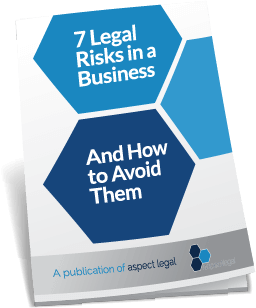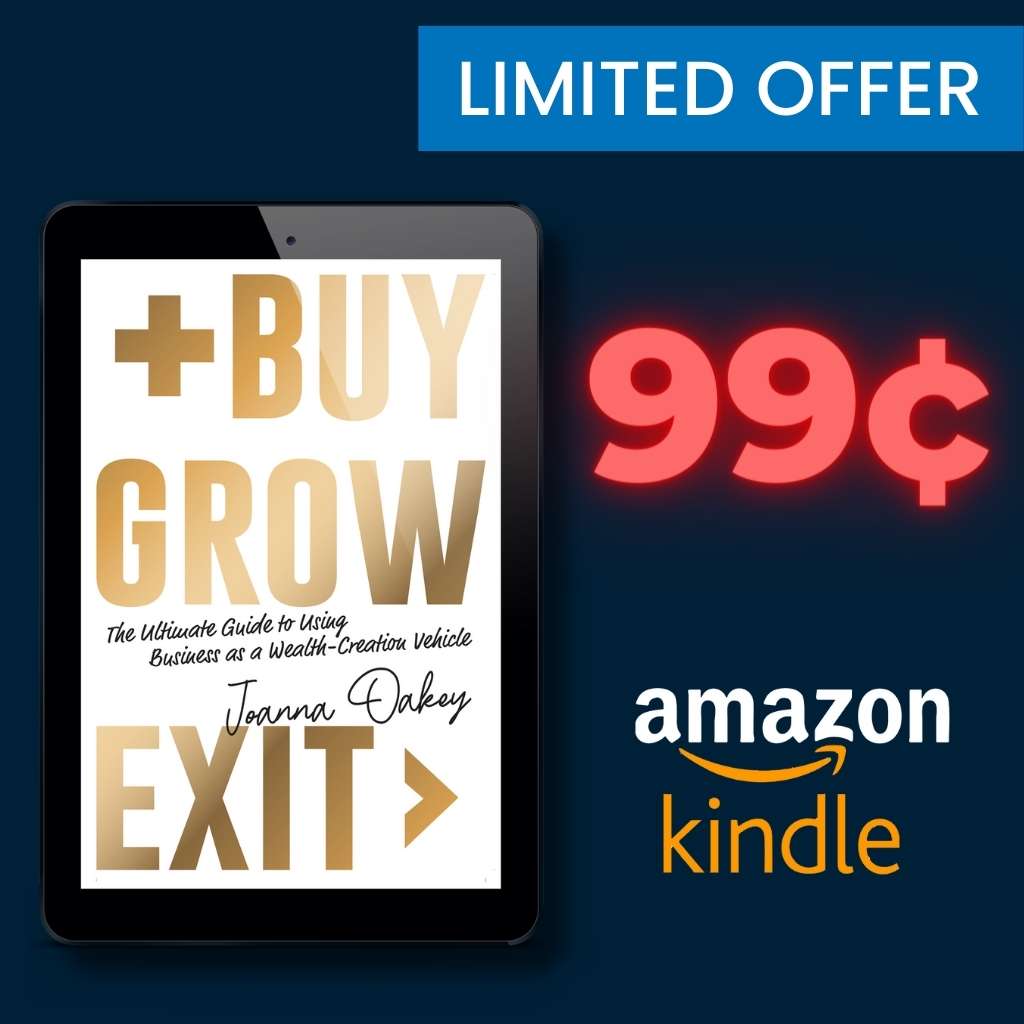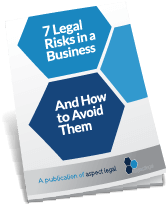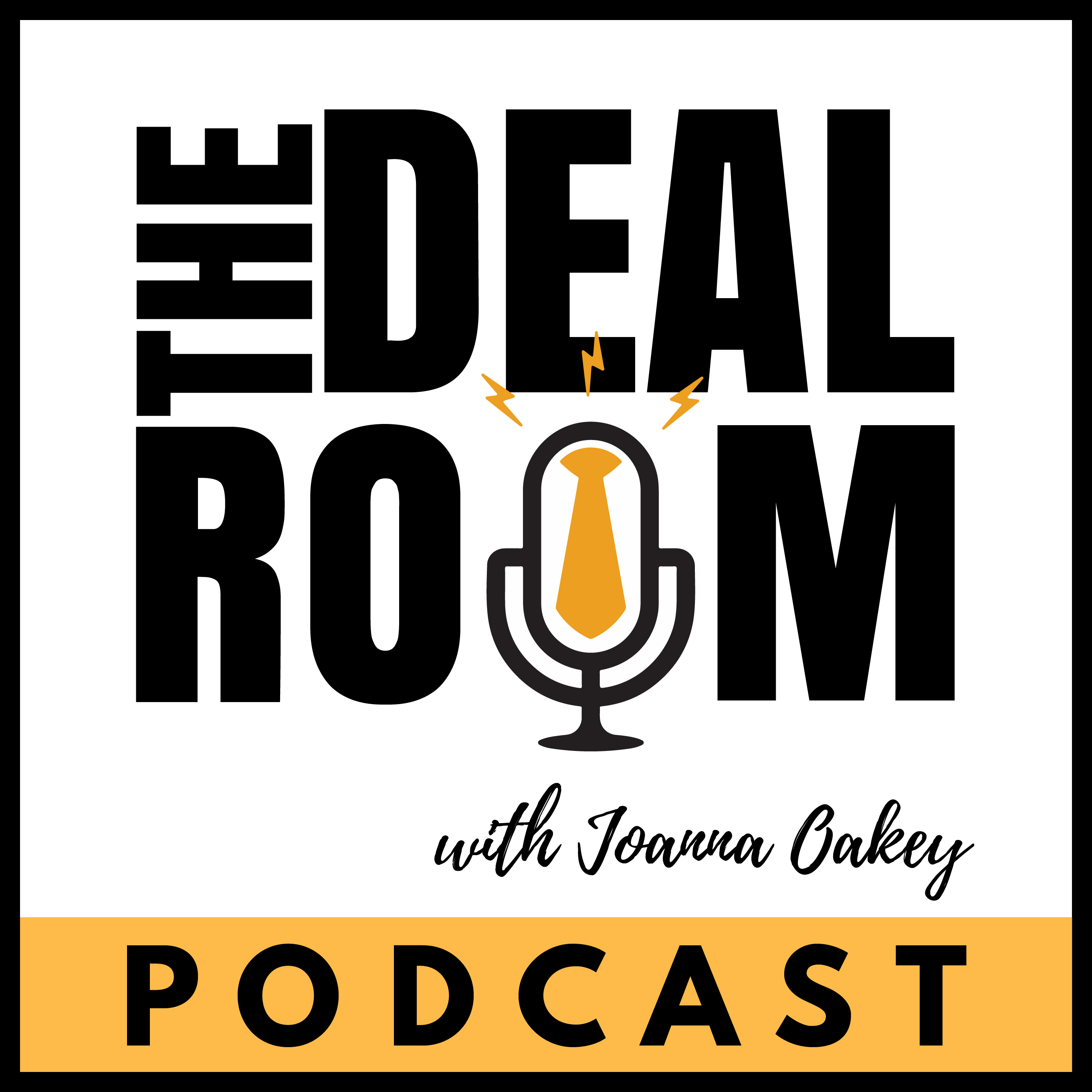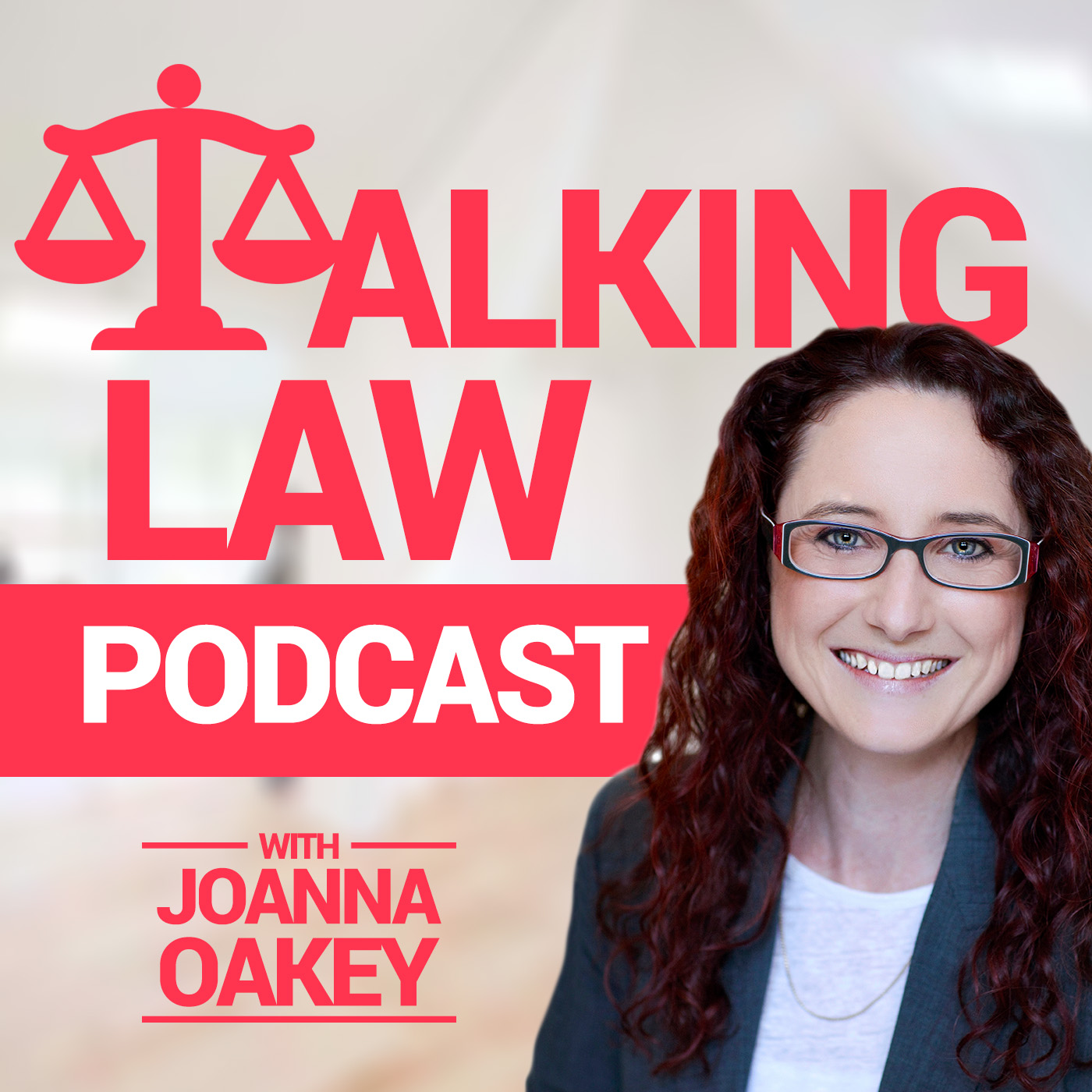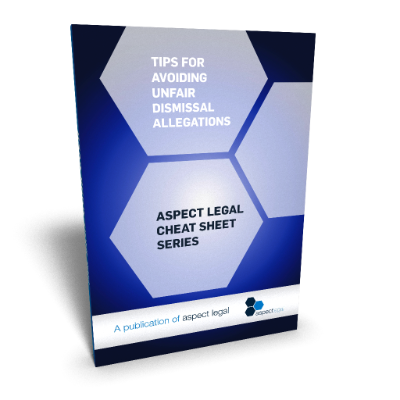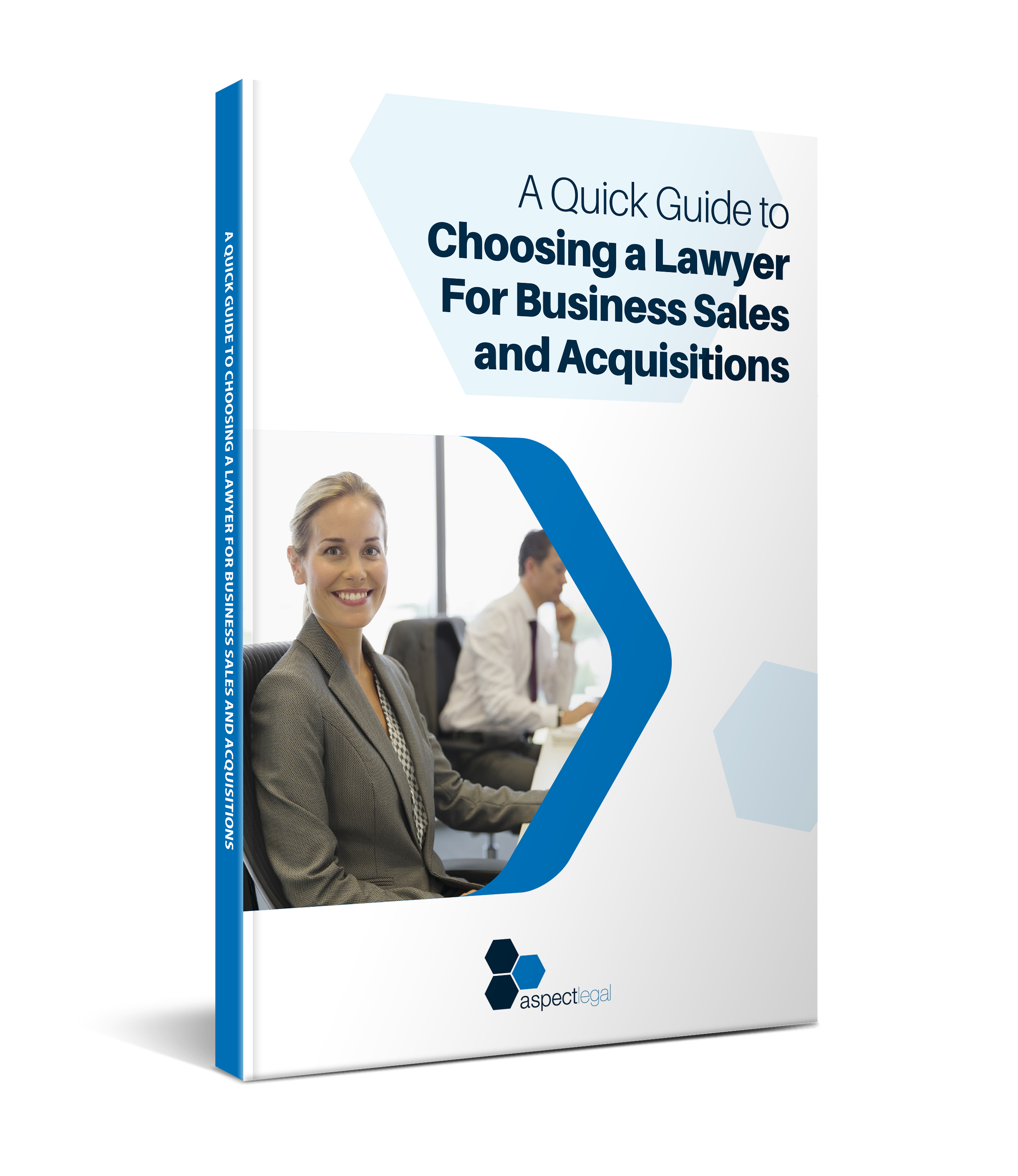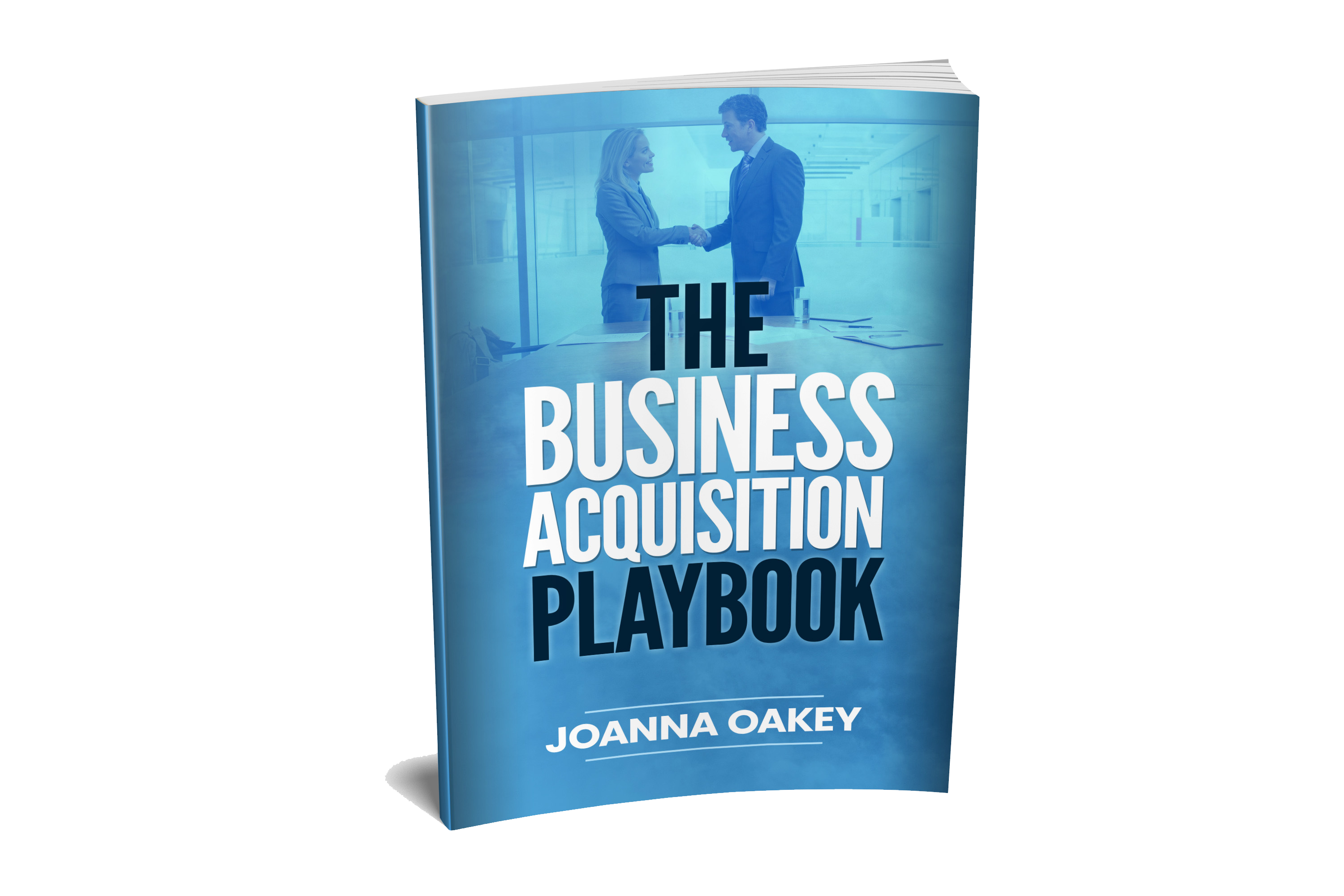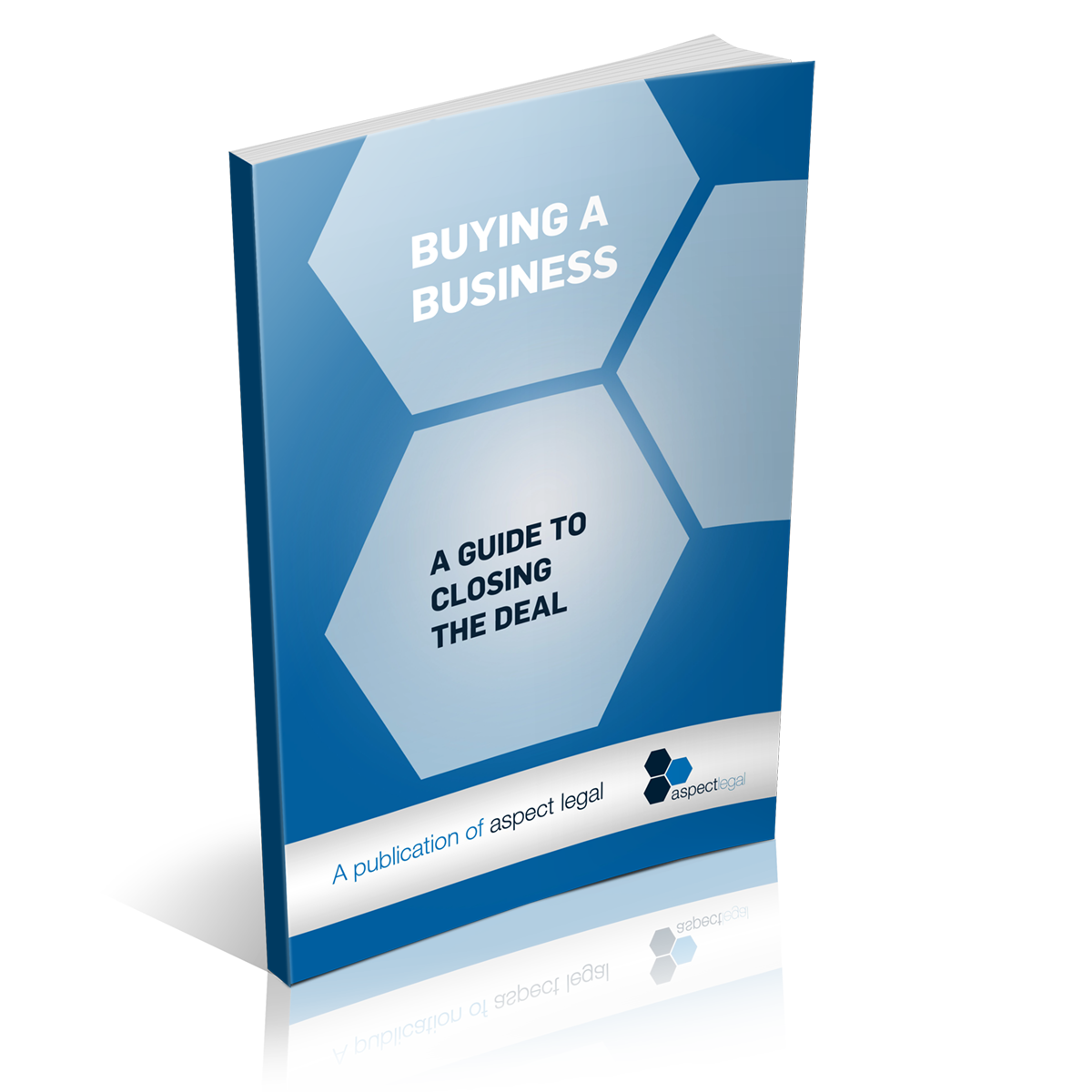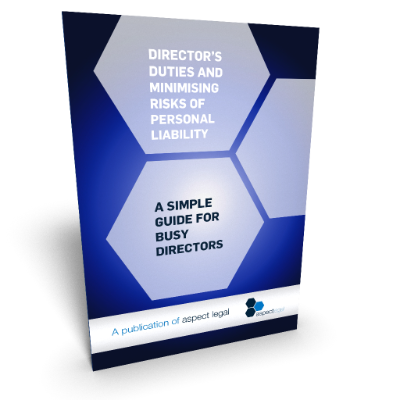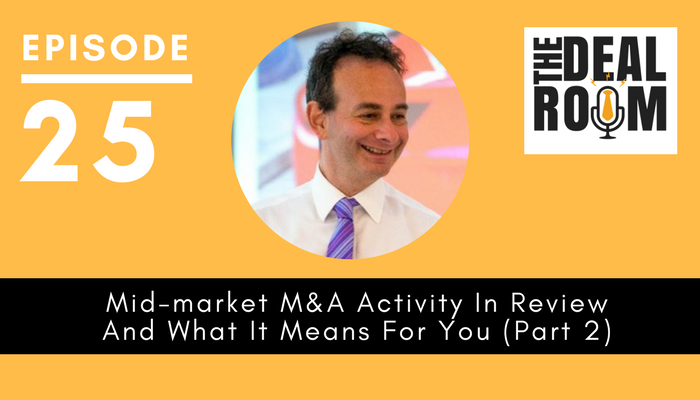
Today’s episode is part two of an exciting two-part series with Mark Ostryn of Strategic Transactions. In this episode, Mark runs us through his checklist of considerations that businesses ought to prepare or consider before going to market. We will also identify some threats in the mergers and acquisitions space that you need to be aware of, and finally we close this series with Mark’s hot tips for accountants, brokers, advisors and sellers.

Episode Highlights:
- Economies of Scale
- Our Value Discovery Service
- Geographical Expansion
- Gain Market Share
- Defensive Acquisition
- Globalisation of Labor
- Threats for Acquisitions
- Tips for Accountants: Be Proactively Involved
- Tips for M&A Professionals: Maximise Opportunities through Technology
- Tips for Sellers: The Importance of Competitive Intelligence
Hi, it’s Joanna Oakey here and welcome back to The Deal Room Podcast, brought to you by Aspect Legal.
Today’s episode is part two of an exciting two-part series with Mark Ostryn of Strategic Transactions. In part one, we discussed some key elements from the 2017 Australian M&A Review, which is a report produced by Mark and his team every year, as they track movements and trends for all reported mid market mergers and acquisitions occurring within Australia.
Based on this report, Mark highlighted the opportunities available for mid-market businesses through the use of technology and intellectual property. He also walked us through major reasons why a buyer buys a business and why it’s integral for sellers to grasp this tactical concept. And finally, we ended part 1 with an insightful discussion on earn outs.
So if you missed part one, I recommend that you check it out after listening to this episode. Just visit our website or pop over to Podcasts on your iPhones and look for Episode 24.
Meanwhile, in this episode, Mark runs us through his checklist of considerations that businesses ought to prepare or consider before going to market. We will also identify some threats in the mergers and acquisitions space that you need to be aware of, and finally we close this series with Mark’s hot tips for accountants, brokers, advisors and sellers. You won’t want to miss it. So, here we go!
Joanna: So Mark, do you have a checklist of considerations of what a business should be thinking about five years out that they should be preparing well in advance of a sale? Do you have a checklist for what they should be thinking about in advance?
Mark: I do actually. There’s about sort of seven or eight things that really come to mind when it comes to an owner sort of planning an exit.
Economies of Scale
Mark: The first one is inevitably economies of scale. You have a situation where if a group of businesses merged together they’ll achieve an increase in revenue or a decrease in costs by merging functions.
Great example of that – doctor surgeries. Between 1983 and 2014, the percentage of doctors practicing individually dropped from 41 percent to 17 percent.
Joanna: Wow.
Mark: That’s quite amazing. But it’s fairly rational if you think about the overheads that doctors will incur in treating a patient relative to the overheads now of one doctor in a group surgery.
Ten years ago my dentist used to be also my dental hygienist. Now it’s much simpler for a group of three or four dentists to have one hygienist. The hygienist is cheaper than the dentist etc.
Joanna: And so in this checklist context you’re sort of saying if owners of businesses can identify these trends, then they can get on board say for example we’re talking about economies of scale right now. They get on board and plan themselves into a situation where either no one will be a good target if there’s going to be a buy up in the future.
Or number two, they’re executing the acquisitions. They’re the one going about and buying up. Is that what you’re sort of talking about here?
Mark: It’s always best to do the stuff yourself and earn the margins yourself rather than have somebody else do it for you. So for example, if I was a single dentist and I was looking at an exit in the next five years or so, I’d be saying “Okay. Well, let’s just rationalise the way that I use my time at the moment and think about potentially getting in two or three other dentists and hygienists before somebody else does it for me.”
I look at the way that other people had corporatised it and facilitate it that way. The other thing specifically to doctors is that the doctors are typically told by the private equity businesses that are actually merging them that they have to stay on board for several years and they have to maintain a certain level of profitability in order to receive the full level of a payout, the earn out.
Now here what the dentist is doing is promising that at some stage in future they will grow these profits. But far better, have a better valuation in the first place, then you don’t need to make promises in order to earn the entire earn out.
Joanna: That makes complete sense.
Mark: So take the initiative before someone else does and gets a cut out of it.
Joanna: Some of these things are hard things for business owners to do because often the skill or the talent that got the business where it is to this point is a different type of skill and talent that is required to be able to look at these other additional areas you’re talking about and work out how to strategise. Maybe this comes back to why it’s useful to get external assistance in this process.
Mark: I want to give a plug here to the accountancy profession.
Joanna: Good. Our listeners who are accountants, will love that. Go for it, Mark!
Mark: I have to say I’ve watched the evolution of the profession over the last five years and really noted just how enthusiastic quite a large number of accountants are with regards to overall business plan. In many cases, they are the people that are actually taking the initiative and saying “Hang on. Let’s just look at the revenue you’re generating and your costs and let’s just see is there a better way to do this.”
Take the initiative before someone else does and gets a cut out of it. - Mark Ostryn #TheDealRoomPodcast #EconomiesofScale Click To Tweet
Our Value Discovery Service
Mark: We’ve done a lot of work with the accountancy profession over the last six months and through a lot of the work that we were doing we came up with a service called Value Discovery.
Mark: Can I just talk you through the rationale by this?
Joanna: Please. Go for it.
Mark: The most common question that’s asked by clients of their accountants is “Can you get me to pay less tax next year?”
And we’ll ignore that question and we’ll take the second most common question that clients ask of accountants which is “What is my business worth?” The accountant used to shrug and say “Well, I guess people in your industry get a multiple of three” — which is pretty meaningless. It doesn’t mean anything.
So we came up with this thing where we said let’s not go and do a formal APS to find the valuation behind things. Those types of valuations are inevitably quite conservative.
Let’s just work out what the market would pay for a business of your caliber at the moment if it was to go to market and then let’s just work out what you actually want to sell your business for and through that assess a value gap behind it.
And so myself and my business partner, a man much cleverer than I am, came up. We use this database of a thousand transactions and we look at the average transaction values. We looked at transactions by industry and we also looked at the way that motivates buyers, how much buyer pressure there is and came up with a series of algorithms that actually predicted value. We tested and tested and tested this and we got down within a sort of a 10 to 15 percent variance between what we predicted the business is worth and what it actually got to in the market. The way that we did that is that we looked at the key success factors for a business in the future. What are buyers going to be looking for in the business? For example, we’ll take a certain industry.
Joanna: I was going to say you know I’m going to ask you right now well what are they.
Mark: It’s different for every industry. So every industry has its own grading system and we know what buyers are asking for. One particular industry, I’ve got a report on my desk at the moment I’m looking at the six key factors are:
- How much can the business ought to make to reduce costs?
- How much access does the business have to technology?
- Is the business able to compete in a tender situation?
- How much ability does the business have to expand or contract its operations in line with market demand?
So whatever business you’ve got, you can take your business to your accountant and say “Tell me what the market value of this is worth.” They, in association with Strategic Transactions, can use our value discovery service. We could look at these kinds of things and say “Okay. This is what your business is worth now. This is what you’ve got to do in order to get the value of that business up.”
Joanna: For people who are interested in it, maybe just now let people know where they can find out a little bit more about that element particularly for our accountants who are listening. So can we find out about this on your website?
Mark: I assume you’ll post all various details about myself and I’m are really happy to talk to anybody that wants it. As you can tell I love chatting about these kind of stuff so I’m really happy to talk to anybody. All you need to do is go to strategictransactions.com.au and you’ll find details about all of the Value Discovery on the site.
We’ve also launched a free service as well, which is a bit of a tester. It’s called Quick Value. You can go and you can answer 14 very carefully constructed questions about your business and get the value spat back at you within a few minutes.
Joanna: Wow! That is clever, Mark. I like it. I like it a lot.
Mark: I must admit, before using the 14 questions, phrasing was such an enormous challenge. It was easier to write a 100 questions than it was to write 14.
Joanna: Yeah, right.
Mark: But we got there.
Joanna: You got there, to 14. I love it.
Mark: Absolutely. It shouldn’t take users more than about 10 minutes.
Joanna: Okay good. And so that’s for businesses as well as I guess accountants who can go and check out how it works.
Mark: We would expect the business to do it or the accountant to publicise it. The business to go to the accountant and say “This is where I am at the moment and this is where I need to get to. Can you help me?”
And if the accountant looks at the business blankly, then go to another accountant because the difference between the good and the bad accountants the gulf is getting wider now.
Joanna: For any accountants who are listening this is an opportunity. I’ve mentioned it a few times in previous podcast but I think there is an opportunity in the industry as well for accountants who really want to jump on to this sort of element in providing more than just compliance for their client base because clients want more than just the compliance as well.
Mark: Totally agree with you. Yeah.
Joanna: And I’ve talked a lot in previous podcasts about technology being a threat perhaps to the accounting industry and this is one of the ways that accountants can diversify the value that they’re providing.
Mark: And look, accountants love our models as well. They love being involved with the models as well because of their natural affinity towards mathematics. We always make sure that whenever we were producing a merger model or an acquisition model or valuation model for anybody, we always want to get the accountants involved. That stuff is just beautiful whenever you see it. I love Excel! I’m sorry, maybe some people don’t share my passion but there you go.
Joanna: Well, you have it. You’re outed now as an Excel lover. There you go!
We were talking originally about the checklist that you had and I think we’ve made it to point number one here, economies of scale.
Geographical Expansion
Mark: Here’s a few more. First thing geographical expansion. What are we doing really well in one state that could be replicated in another state.
I had a client two or three years back. They were, I would say, the world’s most efficient company for cleaning up graffiti.
Joanna: Wow! Thats a niche service.
Mark: Absolutely. They only operated in New South Wales. They only did public work for councils. But the owner had to introduced such – well first off, we had technical innovation with regards to scheduling so that he knew exactly where any van was at any point in time or anything like that. But he also formed a partnership with somebody who had produced and patented a paint matching system.
So typically when a graffiti truck comes across some graffiti, they will take a sample of the paint next to the graffiti. They’ll go down to the local paint store. Get the match at the local paint store and then go back to the scene of the crime.
Now with the technology that had been acquired by the owner, the van could on site mix samples of the paint quantities of less than 50 millilitres and basically get the job done in a third of the time. If you can get the job done in a third of the time, it basically means that you need two thirds less vans or you could price your business two thirds cheaper or something like that. And of course they were winning all the tenders.
What the owner had produced, working 20 hours a week now by the time he’d set it up, was a system that not only had IP in it but was instantaneously able to be duplicated anywhere. It was a beautiful little system in itself. Of course the natural acquirers were the large graffiti and cleaning companies and all the other states in Australia. You can see where the value comes from something like that.
Joanna: Absolutely. Wow, that’s a really good example. Tell you what. Bet he had his intellectual property protected though, Mark.
Mark: I believed that he did. I think maybe he may have even used Aspect in order to get it.
Joanna: All right. So geographic expansion. I love that example.
Gain Market Share
Mark: Obviously, gain market share. Look at an acquirer. An acquirer can either build the products themselves or they can go and buy another company.
What are the risks of building the product yourself rather than simply just going and buying someone else’s business. So sometimes an acquirer will look at products that they want to develop themselves. But actually it’s much cheaper just to go to market and buy it. That’s the story of most tech companies.
I think one of the largest M&A transactions in history was Facebook paying nineteen billion dollars for WhatsApp, which was a technology company that had 10 million dollars in revenue. It’s absolutely phenomenal simply because they judged that it was cheaper just to buy several million customers and the technology in place than to build it themselves. Of course they did the right thing because now they’ve got a billion customers doing it. That’s an extreme example.
Next thing, you can acquire customers or you can acquire distribution channels. I’ve got another good example of that actually.
One actually is a colleague of mine who owned a nail business. He couldn’t get into the hardware chain so he went and bought his nearest competitor who was already in Mitre 10.
Joanna: And when we say nail here I’m picturing hammer and nail. Right? This kind of nail?
Mark: Yes. Those businesses did exist in the 90s. I don’t think they exist now. But it’s a great example of when you couldn’t get in to a Bunnings or a Home Hardware or a Mitre 10 or something like that, you simply just go buy the competitor that’s already there if distribution is an issue.
A food company that I assisted, a bread company, bought a garlic bread company. The rationale behind that was because the bread company was already involved in the supermarket wars with Coles. They were setting up their own bakery divisions and they were saying “Okay. Well, if we’re going to fight them on one front which is fresh bread, let’s go fight them on two fronts by fighting them over the refrigerated section. So let’s buy a garlic bread company and then we can get an understanding from the frozen and refrigerated goods people about the way they see their market evolving.”
You have that and also it was actually quite convenient if you can buy one of your competitors because you can make sure that your customer stays with you as well.
Joanna: Yep. Wow, that’s true.
Mark: So that’s diversification.
Defensive Acquisition
Mark: I think we’ve probably covered off intellectual property as well. And the other thing is of course is this defensive acquisition where you think that your competitor is going to eat you up if you don’t buy something and so you’ve got the pressure to buy.
Those are good reasons to buy. But there are many bad acquisitions as well. I think there’s some statistic that was floating around a few years ago that basically said that more than 50 percent of mergers and acquisitions fail. Fail to achieve a decent return.
There’s a whole bunch of rational reasons for that. Like the fact that the integration was done badly and all the things that I guess the listeners can realise things that can go wrong. But sometimes a lot of the buying decisions in the first place are absolutely crazy. And the bigger the company the more crazy the buying decision.
Group think is a wonderful thing. You have an idea that’s fixated between the management and they think about things over a period of time and their thinking becomes narrow and they become fixated on something. They have to do something. There’s ego.
Another interesting thing is where you get a digression in the objectives of the owners, which maybe the shareholders and the management. The management want to do things like become more powerful, have corner offices, say that they’re in charge of a business that’s worth 500 million rather than 200 million or something like that. You get a history of the most crazy acquisitions that take place.
I’m not saying that people in the mid-market will be the beneficiaries of them all the time. But quite frankly some of the time.
Joanna: Yeah. It’s really an interesting statistic that you talk about here about more than 50 percent of mergers and acquisitions failing and you’ve listed all of these great reasons for an acquisition. What should organisations be doing to sense check this? Do you work with organisations in this phase when they’re looking at growing through acquisition? And if you do, how?
Mark: When I’m working on the buy side, it’s very important that my clients (the prospective buyer) gets balanced judgment from me. Now in most cases, and I have to be honest with you, in most cases I will advise against straightforward acquisition first off.
I would typically say “Okay. Can we achieve what we’re intending to achieve any other way? Is there a possibility of a strategic partnership? Is there a possibility of a joint venture? What could we do that actually helps you retain some of the benefits but actually de-risks you?
And so it’s incumbent upon me to not necessarily do something that suits my primary goal but suits the client’s growth objectives. And that’s a very important criteria and I think the client, the buying client needs to consider that when they’re negotiating with the advisor about success fees rather than consulting fees.
Joanna: Yeah, that’s an interesting one. Yeah.
Mark: Because if a client that wants to buy remunerates a broker based on a successful transaction, then the motivation of the broker is to buy a business on behalf of the buyer for the highest possible price so that they can earn the highest possible commission.
I mean that is a ridiculous state of affairs. So that’s definitely one word of caution. So make sure you remunerate the people that are working for you in the most appropriate way and look at alternatives to acquisition and really think them through.
Now I think there’s a whole bunch of other things as well that I sort of want to chuck in here. The first thing is probably something that you’ll hear time and time again. Consider now the speed of technology transition.
Globalisation of Labor
Mark: An owner’s business value is depreciating faster and faster in this economy. There are more and more barriers to entry. They’re getting lower and lower and lower. We’ve got globalisation of labor.
I sat with four or five people today and they’re all small business owners. Every single one of them outsources more than 50 percent of all of their work offshore and these are businesses with less than 10 people in them.
Joanna: Yeah. And what sort of industry were these businesses in?
Mark: I’m just thinking about it. There was one person who basically manages home units. Sorry, a rental home units for holiday makers. All right. So she has a very very scalable business and there’s a lot of administration, etc. involved in that.
There’s somebody who is producing training packages on managing cash flow particularly invoices payable. She’s doing a lot of social media work, materials production, video production, those sorts of things. Again a lot of that work is being done offshore.
A lot of the work that I do now is also offshore as well now. I do tend to find that once you get a process that is easily expandable and can be broken up into pieces etc. sometimes it is better for that process to go offshore.
Joanna: Absolutely. I completely agree. We are a bit the same. I have seen the changing landscape in this particular element that you’re talking about right now, the use offshore workforce particularly drive quickly over the last certainly over the last five years. There’s been a really quick ramp up.
It does lead you to wonder where will we be in five to 10 years time. It’s a really good point. This is maybe a threat to the ongoing value of businesses that are based on the value of a workforce I guess.
Mark: Yes, it’s the IP that sits behind it, not necessarily the workforce. It’s the IP that sits there and the processes that the people go through.
Once you have a process that is easily expandable and can be broken up into pieces, sometimes it is better for that process to go offshore. - Mark Ostryn #TheDealRoomPodcast Click To Tweet
Let’s Take A Break
Let’s take a short break. When we get back, Mark identifies some threats in the M&A space, and then we close this series with Mark’s hot tips for accountants, business brokers, advisors and sellers.
And that’s next! This is Joanna Oakey, and you are listening to The Deal Room – a podcast brought to you by Aspect Legal.
Our Business Sales And Acquisitions Services
Aspect Legal has a number of great services that help businesses prepare for a sale or acquisition to help them prepare in advance and to get transaction ready. And we’ve also got a range of services to help guide businesses through the sale and acquisitions process. We work with clients both big and small and have different types of services depending on size and complexity. We provide a free consultation to discuss your proposed sale or acquisition – so see our show notes on how to book a time to speak with us, or head over to our website at Aspectlegal.com.au
Talking Law – A Sister Podcast
If you’re interested in hearing smart legal tips for business, The Deal Room’s sister podcast – Talking Law – is perfect for you! These two are now among the top legal podcasts in Australia!
In our Talking Law podcast, I dissect a different topic each week that I have seen impact businesses, and I will then provide actionable tips for you to avoid that risk, or to use that legal area to your advantage.
We release new episodes every 10 days. You can listen to our episodes on www.talkinglaw.com.au or subscribe to our Talking Law podcast on iTunes to be the first to know when a new episode is out. Now back to the show!
Welcome Back
Welcome back! Earlier, Mark walked us through his checklist of considerations that businesses ought to be thinking about in advance, before going to market. This time, we’ll continue the conversation and identify some threats lurking out there in the M&A arena before closing off with some actionable tips for anyone involved in this space.
Threats for Acquisitions
Joanna: What other threats do you see at the moment in terms of acquisitions?
Mark: I would say more and more potential for litigation.
Joanna: Oh, we would agree.
Mark: I don’t know if this is timely or whether I would necessarily want the business environment to be exposed to the same kind of challenges at the moment that media and politics are involved. But I mean, how many retrospective cases will there be in the future for sexual harassment? Just as an example. So that’s one thing. I mean I don’t know I guess.
But what’s really going places at the moment – Cyber Security Risks. We’re finding now that due diligence is done more and more efficiently by more and more niche sub subject experts in due diligence.
No longer now for a reasonable sized transaction is there somebody that manages due diligence or is there an accounting function that manages due diligence. We’re finding due diligence specialists.
We’re not just finding due diligence specialists, but we’re also finding due diligence specialists that have a niche in a certain area. Like for example cybersecurity.
One malicious individual can down the entire trading capabilities of a large business. An absolutely essential component of due diligence now is to have proactive and effective controls that basically minimise the risk of this happening and mitigate the effects if it does.
One malicious individual can down the entire trading capabilities of a large business. - Mark Ostryn #TheDealRoomPodcast #CyberSecurityRisks Click To Tweet
Tips for Accountants: Be Proactively Involved
Joanna: Look, I think you’re absolutely right. And next what I’d like to do maybe is drill a little bit very quickly in to what the practical application is of all of this information we’ve been talking about today for subsets of our listeners who are the brokers and M&A advisors and our accountants out there. How do we turn this into something practical for them?
Mark: Okay. Let’s just go through this. We’ll look at the accountant. We’ll look at the the M&A specialist. And we’ll look at the actual seller as a good way of categorising. I’ll just sort of give you a few off the cuff words in each.
Now look, the accountancy side of things it is really involved in becoming involved in the mindset of the client. It’s understanding from a distance out whether their client is actually creating value on a year to year basis. I mean what is the point of an owner coming to work if their business is not increasing in value from year to year.
There needs to be this benchmark that the accountant can turnaround from year to year and say is this business creating value because there’s is a good chance, not necessarily in all cases but particularly with smaller businesses, the owner incurs more risk and less salary than their most senior employees. So why come to work? Only come to work if you’re increasing value.
How do you find out that whether you’re increasing value or not? You talk your accountant. You become involved in things like value discovery and you really get a benchmark as to whether it’s a good idea you showing up at work in the morning or you’re better off just sitting there and going playing the stock market.
Joanna: This is such a good point that you make Mark because I think this is a direction that if accountants as a whole were running it, businesses would be a very attracted to getting that sort of information from their accountants. So I just think it’s a real opportunity for accountants out there to really provide deep value for their customers.
Tips for M&A Professionals: Maximise Opportunities through Technology
Mark: Absolutely. Now that we’ve gone through the accountancy profession let’s talk about my colleagues, the M&A professionals, because the makeup of an M&A professional hasn’t changed as quickly as the accounting profession. But we are seeing some interesting movements there as well. So we’re looking at advisors now.
Now if you look at who did transactions two three four years ago, it used to be made up of small boutique firms of two or three partners and these were typically well-connected people. They were corporate refugees from the likes of JP Morgan or Macquarrie or someone like that and they had a Rolodex of contacts.
And you went to one of these people and said “I’ve got this business etc. etc.” and the first thing that they would come back to you is say “Look, I can make some phone calls or I know a few people.” or something like that. And it was done on as almost sort of like a discreet sort of gentlemen’s club-type process.
Now that has all changed. When I established Strategic Transactions, that’s one of the shifts that I saw occurring and I just felt that it was really unfair that business sellers weren’t getting the true value to their business because there wasn’t enough effort being made by their advisors to ensure that they maximised value.
What we’re seeing right across the industry now is the impact of technology. There are now more and more tools, technologies that are there to assist with reporting, with integration because post merger integration is one of the key issues. That’s where a lot of the business value is achieved or it’s lost based on that.
There are now global listing databases to facilitate better cross-border deals. So now it becomes just as easy for me to find a potential American buyer as I can an Australian buyer for a particular type of business. Those are facilitated through technologies like interlinks.
There’s much much more information now on precedent transactions that are occurring around the world thanks to the likes of technology such as Pitch Book.
You talked about modelling beforehand. I can’t speak highly enough about Modano in terms of better quality financial modelling. We’re working with Modano at the moment.
Joanna: Are you? Great!
Mark: Yes, it’s actually thanks to your podcast I have to say. I did say that I was going to listen to it on the plane.
Joanna: Oh that’s great. We’re glad to facilitate.
Mark: But what it’s done is it’s given middle market businesses access to the same tools that only the big investment banks had beforehand. If you wanted to build a model, you went to one of these big banks and they would produce you this fantastic model, incredibly complex, cost an absolute load of money and you couldn’t use it yourself.
Whereas what Modano have done and I don’t know if this is the right word to describe this, but what they’ve actually done is they’ve commodified the whole thing. They’ve made it simple. They have made it like a jigsaw. They’ve commoditised it. They have done it in a very rational way and they said “Hey look, we know what the problems are with Excel. Let’s bring in something that actually makes Excel a whole lot easier and a whole lot more powerful and then people can use it properly.” And so all we need to do is build the deal models on top of that. You give it to the client and the client can use it over and over again. They can use it for rolling forecast or anything. And the client themselves can actually do the budgeting and the forecasting based on that.
Joanna: And isn’t that a fabulous example of an innovative approach to a problem that was sitting there. I think it’s great.
Mark: Absolutely. So that’s how I see things as an advisor.
Joanna: Sorry. Let’s drill into that just a small amount more. So the opportunities for advisors here are to get deeper do you think? And to jump on board some of these technology opportunities to deliver a deeper service for their clients? Is that effectively what you’re saying? Is the opportunity there?
Mark: It’s not an option to do it. It’s a crime not to do it, because you’re cheating your client. You’re there to maximize the value of your clients business. That’s why you’re there. All right. And you don’t do that through the old boys network.
Joanna: What was our next component?
Tips for Sellers: The Importance of Competitive Intelligence
Mark: Let me just chuck in a couple of points here from the actual sellers perspective. There’s one thing that I always hammer apart from modelling them and value discovery. The other thing is competitive intelligence.
We get so much data about what’s going on in the world about our particular industry and how shifts are taking place. But what I am seeing in very successful businesses that are coming to market is the ability of their CEO to really get the landscape of how their business is evolving, what the main competitive opportunities they have, what their threats are, where the business will be in five years, what industries are emerging together, where the opportunities are between industries, etc.
That just doesn’t come by accident or by setting up Google alerts or anything like that. It actually comes by sitting down with strategist or futurists. There’s lots and lots of futurists around now, a competitive intelligence person and actually sitting down and saying “Well, with five years out, what is the business going to look like in five years time? How are things going to evolve.
Once we know how things are going to evolve, we’re going to make sure that the products and services that we build are going to be appropriate to that future market. I can tell the difference between somebody who’s been through that exercise and somebody that hasn’t.
Joanna: Is that right?
Mark: Absolutely. Because there are people you can sit there with and they can draw or pull a five force model and they can say this is happening here and this is happening there. They tend to also be people. They’re confident within themselves but they don’t particularly brag because they know what the threats are. They don’t just know what the threats are, but they know how to mitigate those threats. And so when the buyer comes along and says “Hey, what happens if that happens? There’s a response to that and that response is rational and believable.
Joanna: Great. So being properly prepared I guess.
Mark: Being properly prepared. Absolutely and of course you can go through all the standard things like make the business more scalable, make sure that you’ve got a succession plan, make sure that your staff are motivated. There is a checklist of them and there are a whole bunch of people that will give you a gain in that checklist.
Joanna: What a great discussion here today. Thanks Mark so much for coming on to the podcast to talk about all of these matters. The first question I actually have for you before we close off is – when are you producing your next annual review?
Mark: I would suspect that by the time we finish the numbers and the analysis and we’d be through every transaction, it is probably going to be about February or March next year.
But look, to be honest with you. If you actually look at the content of our current one, it’s really everything that you need for both a buyer or a seller or an advisor. The trends are still the same. We’ve broken down things by industry. We’ve broken things down by motivations of buyers by industry. We’ve looked at cross-border transactions. We’ve looked at sales to public and private companies and we have done a six month analysis and the figures don’t shift that much really.
Joanna: It’s so comprehensive. I think it’s great. If people want a copy of this, presumably they can get a copy from your website?
Mark: I think there’s a little pop up when you come onto our website that sort of asks you to register yourself. But if you just search within the site for M&A review, there’s a copy there or my email address is Mark Ostryn. I guess I probably need to spell that out don’t I?
Joanna: I’ll tell our listeners now. If you’re running on the beach right at this time listening to this podcast or you’re driving in the car, don’t worry you don’t need a pen to write this all down. Just head over to our shownotes at thedealroompodcast.com.
But Mark, spell it out for our listeners who have got their pen in their hands right now.
Mark: The organised ones. Okay. All right. So it’s [email protected].
Joanna: Brilliant. Okay. Fabulous. All right. So use that email [email protected] if you want to contact Mark to get a copy of the review that they produce or head over to his website at strategictransactions.com.au. As I said we’ll also have a link in our show notes and on our website at thedealroompodcast.com.
Legal Wrap-Up
Joanna: Well that’s it for our two part series with Mark Ostryn from Strategic Transactions in which we’ve been reviewing the trends over the past couple of years in mid-market M&A activity.
As a quick recap in this episode, discussed a checklist of considerations that businesses ought to prepare or consider before going to market. We also identify some threats in the merger and acquisition space that need to be aware of and finally we closed out the series with Mark’s hot tips for accountants, brokers, advisors and sellers.
Now as I mentioned at the beginning of this podcast if you haven’t already listened to the first episode of this two part series. Head over to our Web site at thedealroompodcast.com or through our website at aspectlegal.com.au and look for Episode 24. Or of course you can just flick back through iTunes or Stitcher.
If you’re interested in the trends in M&A activity, you might also want to go back and check out one of the first episodes of this podcast way back at Episodes 2 and 3 where I provide an overview of the business sale and acquisition cases that have been hitting the courts in order so that you can be aware of what not to do in a transaction. So if you’re interested in looking at some of those legal elements head back to Episodes 2 and Episodes 3. And of course if you’d like to contact any of our extremely experienced lawyers Aspect Legal or if you’d like a transcript of this podcast episode so you can read it in more detail, just head over to thedealroompodcast.com.
All right well look thanks again for listening in! I’m Joanna Oakey and you’ve been listening to The Deal Room Podcast brought to you by the commercial legal firm Aspect Legal. See you next time!
Disclaimer: The material contained on this website is provided for general information purposes only and does not constitute legal advice. You should not depend upon any information appearing on this website without seeking legal advice. We do not guarantee that the contents of this website will be accurate, complete or up-to-date. Liability limited by a scheme approved under Professional Standards Legislation
